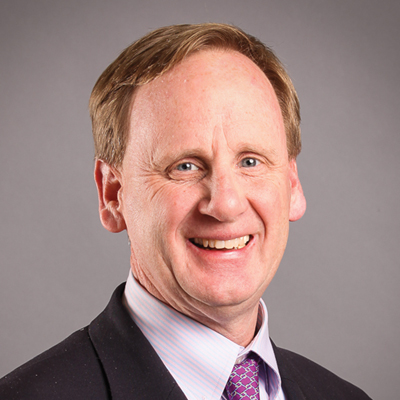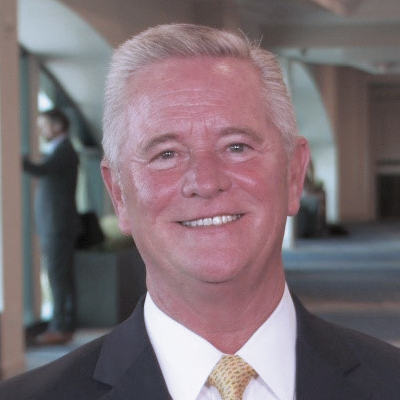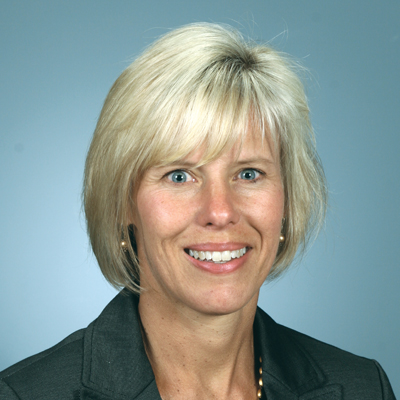Entrepreneurial Agent/Broker
Programs That Produce
Insurance entrepreneurs say the program sector offers the opportunity to quickly build effective, scalable business.
Panelists
David Springer, NIP Group (pictured)
Geof McKernan, NSM Insurance Group
Joel Cavaness, Risk Placement Services
Heidi Strommen, ProHost USA
The program sector—typically wholesale brokers working in conjunction with an insurer to serve a tightly defined niche—continues to grow, passing the $40 billion mark in annual premiums, according to Target Markets.
This sector also provides an opportunity for entrepreneurial-minded producers to capture and profit from tightly defined markets. Identifying, launching and maintaining a successful program business requires a combination of creativity, strong relationships and focus to find the issues. It takes knowledge, a little bit of luck and a whole lot of hard work.
Veteran program business leaders—David Springer, group president and chief operating officer, NIP Group; Geof McKernan, founder, NSM Insurance Group; Joel Cavaness, president, Risk Placement Services; and Heidi Strommen, president, ProHost USA—recently sat down with AMBestTV to discuss what guides them, how to gauge insurer support, how to move into the program sector and how to assess prospective opportunities.
Their panel was part of a three-part series on entrepreneurial agents and brokers put together by Best's Review and AMBestTV.
The challenges in the marketplace are actually good for program administrators. Those are the types of conditions where we really make things work.
David Springer
NIP Group
Specialty Markets
“It's an unprecedented time of uncertainty and risk—economic uncertainty, both nationally and globally, political uncertainty,” Springer of NIP said. “We've got social uncertainty and unrest. We've got natural disasters. We've got wildfires, cyclonic activity, even earthquakes on the East and West Coasts. We've got a health care crisis related to the pandemic.
“Interest rates are extraordinarily low, and the Fed just announced they're going to keep them that way until at least 2023. That puts enormous pressure on the insurance markets—carriers, in particular—to deliver probable underwriting results because there's a need for rate. They have to generate an underwriting prop, but they can't rely on investment income. In fact, reserve releases are slowing, if not being strengthened, as the current situation expands.”
Many of today's issues continue to open doors for those who are prepared, Springer added. “The challenges in the marketplace are actually good for program administrators. Those are the types of conditions where we really make things work. It's our focus, our ability to adapt and orient toward our clients and deliver what they need, when they need it most, while other people are still trying to figure out what's going on.”

We’ve doubled down on our technology. We’ve doubled down on our diversification. We’ve also doubled down in investment in our people.
Geof McKernan
NSM Insurance Group
McKernan of NSM said pandemic-related closures hastened the move toward faster, more nimble systems and processes.
“We've doubled down on our technology. We've doubled down on our diversification. We've also doubled down in investment in our people,” McKernan said. “We've actually profited pretty significantly through these because of our diversification and how we've done that because we have over 15 different specific programs.”
The shutdown shrank some coverage lines but fueled the growth of others.
“Our sports and wellness program took a dive because a lot of the sports franchises and the gyms closed. But on the upside, we still have our condominium program that has grown substantially,” McKernan said. “We have a big pet insurance program and that is growing. You can't buy a dog today. A lot of these people went out and insured their dogs and we've seen the benefit of that.”
Cavaness of Risk Placement Services adds to the list of coverages that have seen significant recent growth. “Certainly our social services, our assisted living, that is a difficult position due to COVID—and, candidly, to many of the things that David [Springer] talked about that the markets are facing. Certainly, some of our public authority business, again attached to some of the civil unrest and things that are happening in that particular market and growing significantly in those particular areas, because there's a need for the specialized nature that we're all talking about.”
Importance of Data
Starting a program takes study, preparation, perseverance—and information.
“Fortunately, we live in an environment where data has become the key indicator of being able to bring that information to a risk-taking partner and be able to sit down with them with that information, of course, hand in hand with the claims information on the particular niche that you're trying to expand or get into,” Cavaness of RPS said. “Program managers bring expertise to the table, a deep-seated knowledge—not just a general view of that particular program area that you're trying to develop or get into, but a deep, deep knowledge of that particular industry. It takes a combination of technology because you have to deliver on technology, you have to deliver on the data, you have to be able to deliver on at least a beginning point on a base of premium that's available.”

There are a lot of buyers out there. There’s a huge amount of interest in the program space.
Joel Cavaness
Risk Placement Services
Successful programs exhibit two key characteristics: profitability and a path toward scale.
“You've got to bring profitability to the carriers. That's really key, first and foremost, because, if you have an unprofitable program, it's not sustainable,” McKernan said. “You can't do a small program today. ... If you're going to do a national program, it has to be $20 million to $25 million. Then, what I like to say, the business has to be sustainable.
“In good times—economic times—or bad times, you still have to be able to maintain that premium quality as well as the depth of that premium. You can't grow something, then not renew at all,” McKernan said. “Then you've got to have a good distribution model. We go directly to the agents, and sometimes we go directly to the consumers. There's all different models today, but you've got to have a distribution that also understands what you're trying to provide.”
A strong technology base is a given.
“Speed wins today. If you have good technology that allows you to distribute your product, whether it's to an agent, whether it's to a consumer, where they can go online, easily delineate what your options are and go, that helps immensely today,” McKernan said. “It's an important backbone to any program today, the technology that you're using. It's a constant investment [to be] quicker, faster, easier. That's really it now, and technology helps that.”
“People want to be able to transact on a Saturday afternoon, or whatever it is that they want to do,” Cavaness said. “Having the capabilities for people to go in, transact, and deal through your technology quickly, seamlessly, without a whole lot of clicks is really the way of today. We've gotten there quickly. It'll certainly be the way for the future.”
But technology is only part of the solution.
“Help them do what they need to do, but [don't] replace the underwriting judgment completely. All the AI in the world isn't necessarily going to get you where you want to go,” Springer said. “There's a balance between the use of technology and human intellect. … It all comes back to managing to profitable underwriting results for our carrier partners.”

Knowledge is king in the program business, and the smart innovative program manager with compelling data to help inform business decisions is going to come out the winner every time.
Heidi Strommen
ProHost USA
Combining Forces
Merger and acquisition activity among brokerages and agencies has been up in recent years, and the program space is no exception.
“There are a lot of buyers out there. There's a huge amount of interest in the program space,” Cavaness said. “It's a very fragmented space. It's one that continues to look toward consolidation, like many of the other areas of insurance distribution.”
But M&A is about more than expanding an organization's head count.
“We look toward M&A to diversify the platform of programs that we have to offer to our customers,” Cavaness said. “It continues to gain traction of particular insurance carriers who love the program space. They want to solidify that particular portfolio of business that they have with a program manager, or maybe candidly, it's an area that they want to expand in. ... In the last few months, we've seen more program managers in the market now. Some of that's due to COVID, some of it's due to concern over tax rate changes, need of technology, need of investment, need of distribution. There's lots of reasons that people look to merge or sell. It's having a pretty big impact in the space.”
The pandemic continues to transform the risk landscape, raising obstacles but unveiling opportunities.
“If you're not nimble enough to respond to those, you're not going to be successful,” Strommen of ProHost USA said. “We're moving from a focus mainly on customer acquisition and applications of technology in that area, to a greater focus on underwriting applications and applications in the claims-handling area, more applications of technology that can impact the loss ratio and underwriting profitability.
“Knowledge is king in the program business, and the smart innovative program manager with compelling data to help inform business decisions is going to come out the winner every time,” Strommen said. “It's something that our partners are looking for. It's something that we can work on with them together to achieve. It's going to help define success in the future.”
As always, success in insurance distribution, particularly in programs, comes down to effort and people.
“You have to do your homework on that specific industry, you have to have a product that's going to differentiate yourself, and then you have to get that out and communicate it effectively to your distribution,” McKernan said. “That's all about your people. ... You can have the best technology in the world, but if your people don't help you communicate that, distribute it and work it, then ... it's not going to get out there. It's about the execution. With the execution you need leadership and you need good people. It really, really comes down to that.”